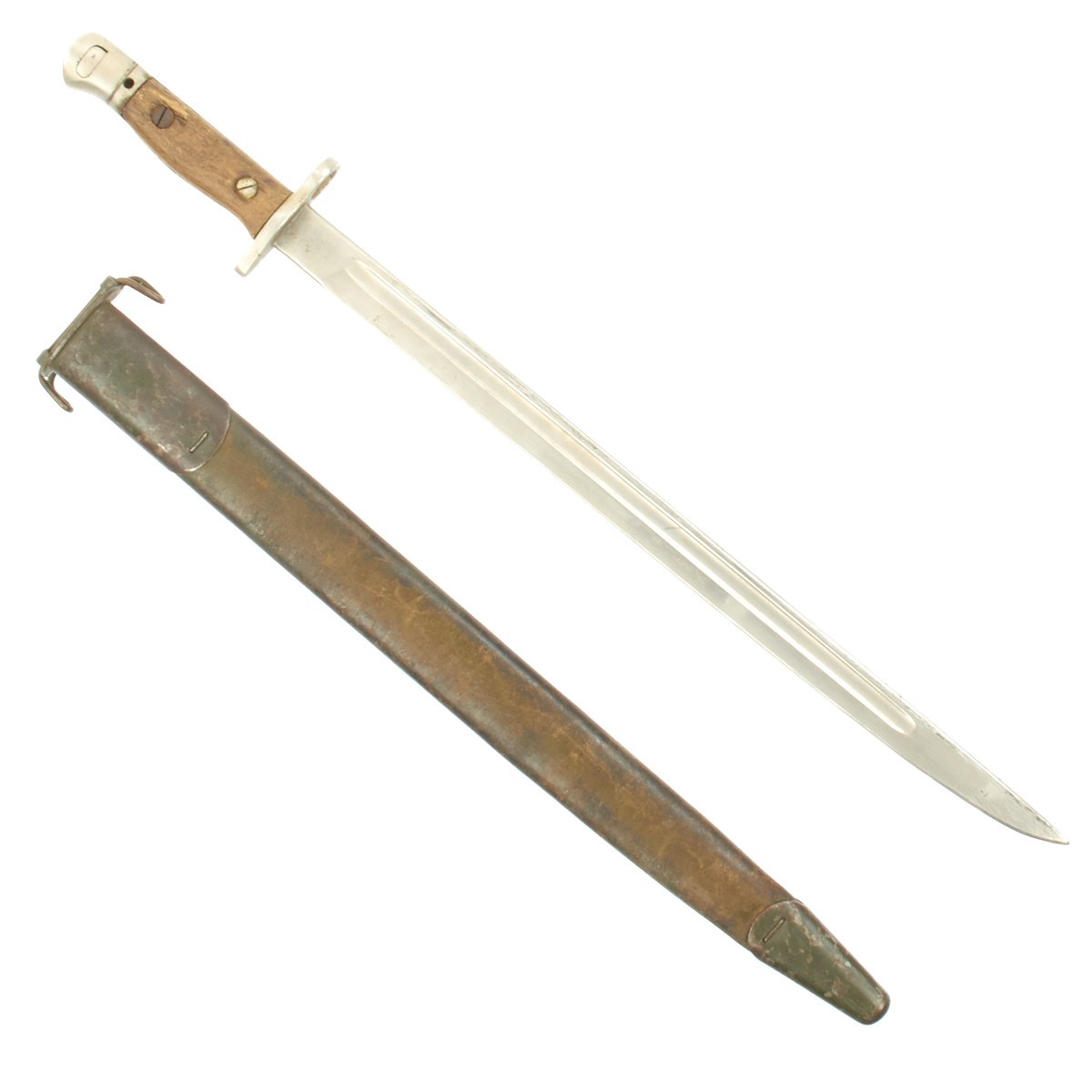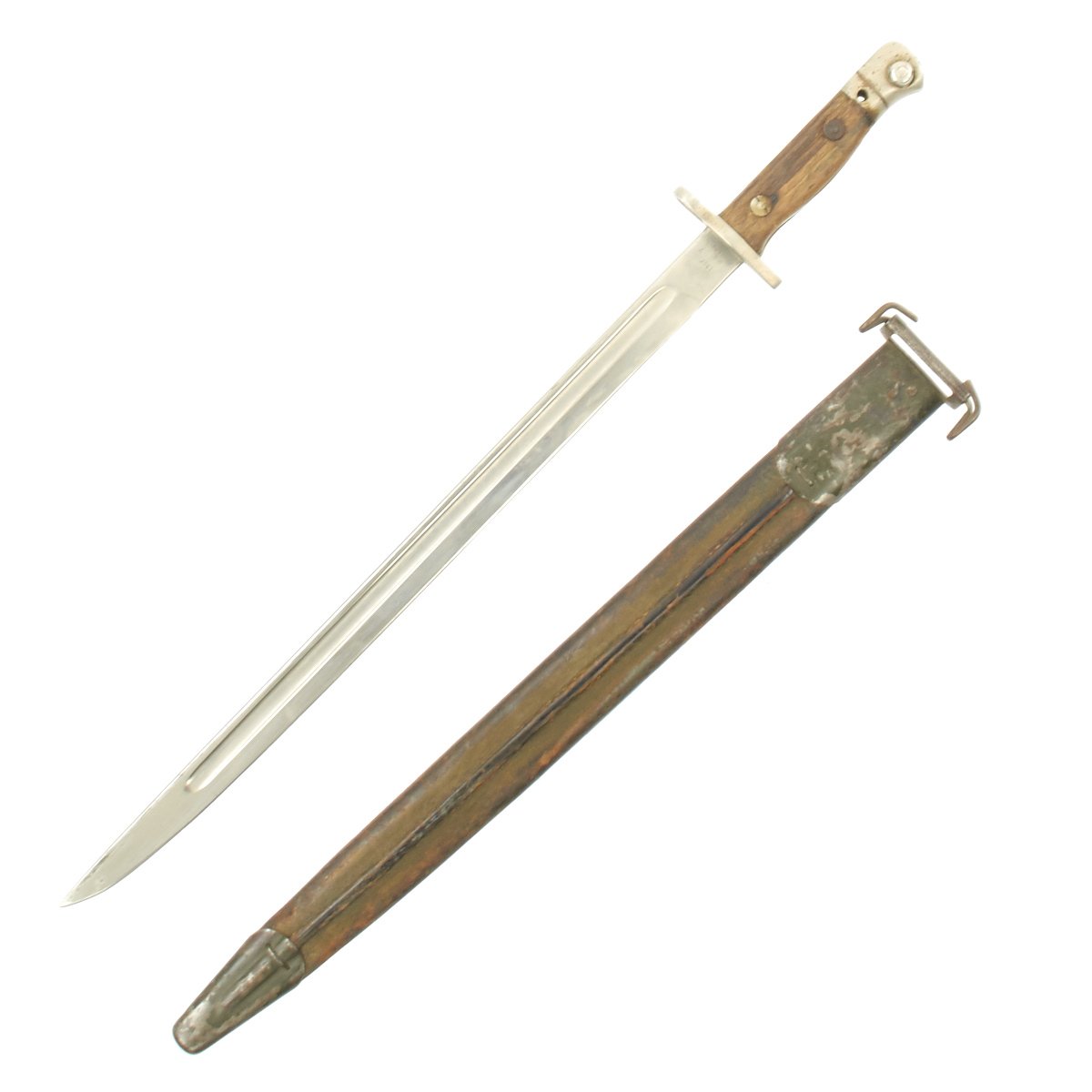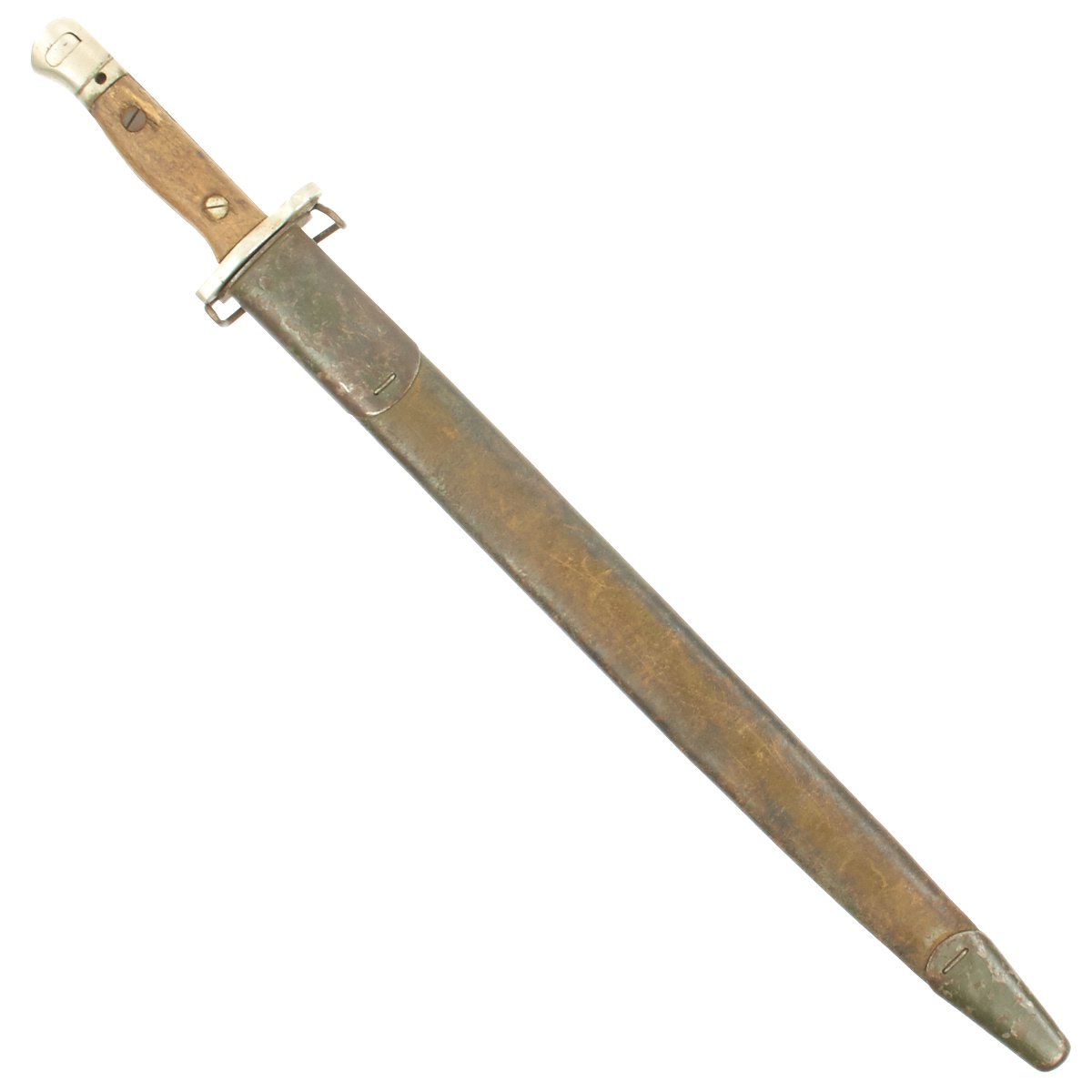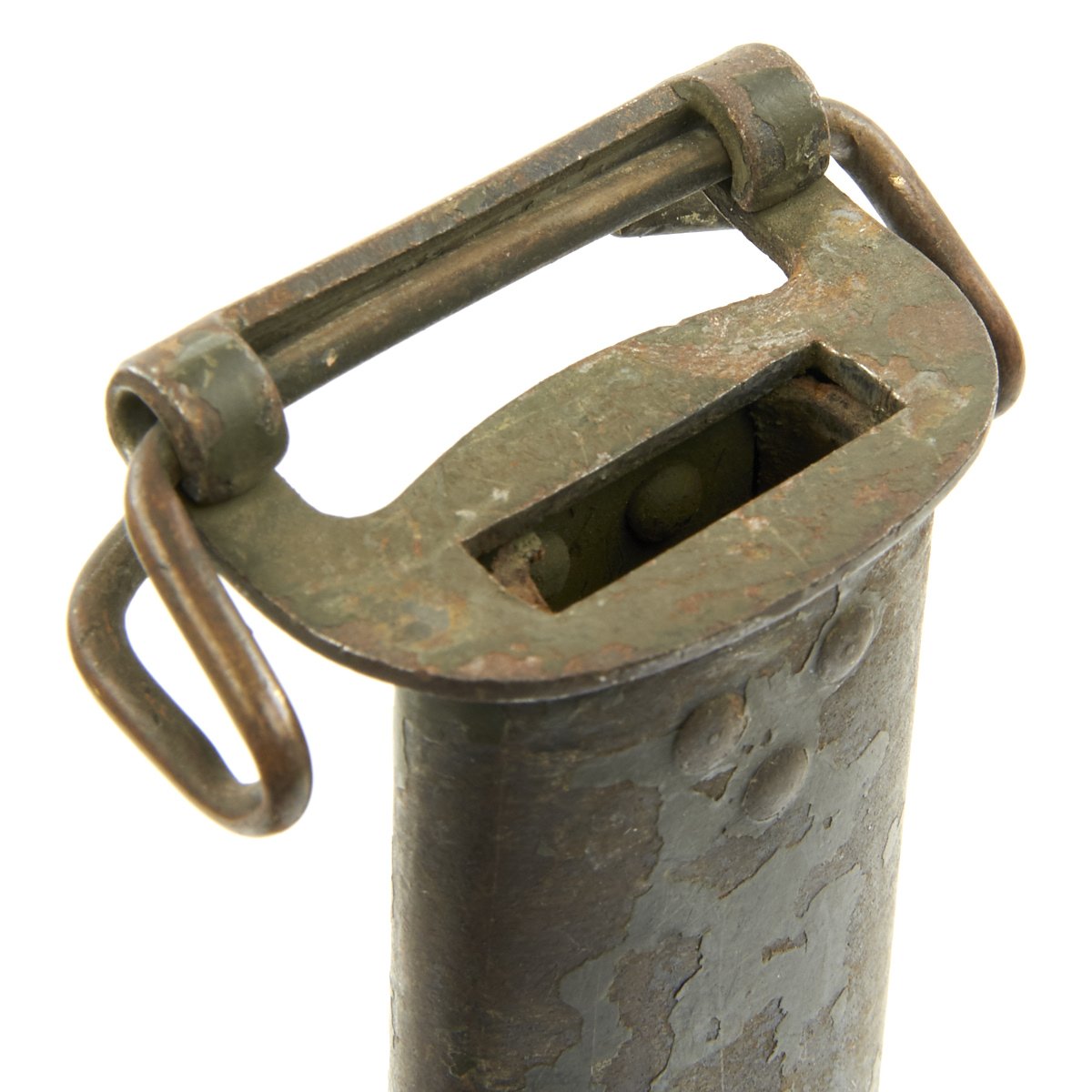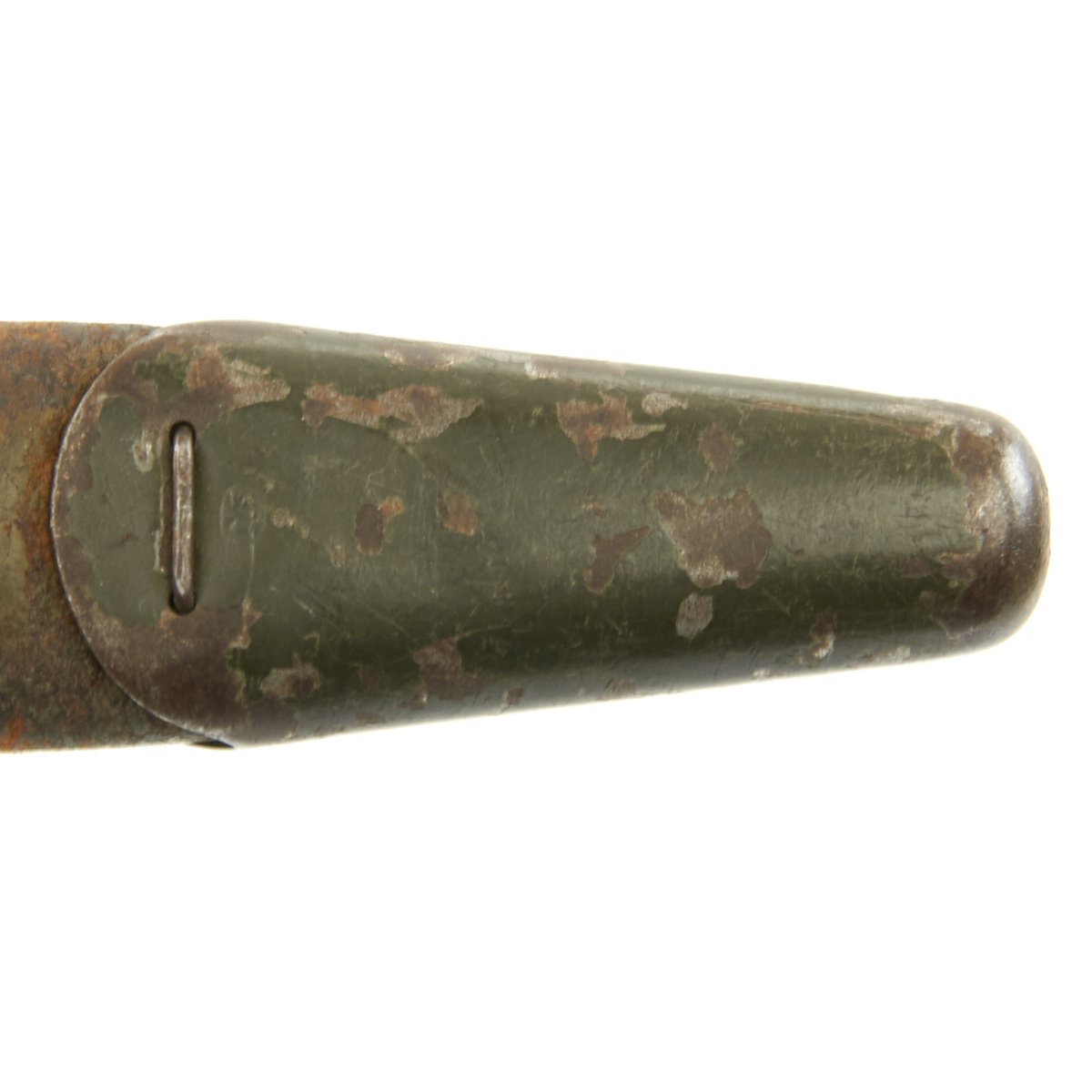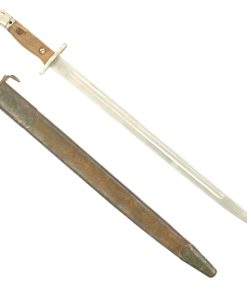Original British WWI Nickel-Plated P-1907 Enfield Bayonet By SANDERSON with U.S. M1917 Enfield Scabbard Original Items
$ 150,00 $ 60,00
Original Item: Only One Available. Sometimes we get items that have definitely had an interesting life, and this is one of those times. This is a standard British WWI P-1907 bayonet, which is marked SANDERSON in full, together with the correct King’s Crown G.R. over 1907, together with all the usual acceptance marks and proofs. The bayonet is also stamped 3 and ’17 on the ricasso, which may indicate manufacture in March of 1917. This bayonet probably was issued during WWI to British forces.
However, after that the bayonet was later refurbished, and after cleaning was nickel-plated, and then found its way into a U.S. M1917 Enfield Scabbard. Was this a bayonet that got taken home by a U.S. Doughboy, or was this used in the UK with U.S. field gear, which was left over after the war? We leave this to the customer to decide.
Condition of the bayonet and scabbard are good, but both do show wear. The bayonet nickel plating is a bit worn, and has some oxidation, but is mostly intact. One of the grip scales is missing a large chunk, possibly about 1/3 of the grip. This could be repaired, but we left it as is to add to the authenticity. Scabbard has wear to the paint, but the leather is still soft, and it displays very nicely.
A British P-1907 bayonet with an interesting history, ready to display!
History of the P-1907 Bayonet
The British “Pattern of 1907” Bayonet was developed for the No.1 MkIII Enfield rifle, often called the SHT.LE, SMLE, S.M.L.E., “Smelly” etc. The P-1907 replaced the earlier P-1903 bayonet, which was a double edged bayonet based on the P-1888 bayonet of the Lee-Metford rifle. The P-1903 had been developed for the “Long” Magazine Lee-Enfield, which was 49.6 inches in overall length. With the introduction of the Short Magazine Lee-Enfield in 1904, the 12 inch bayonet was no longer considered long enough for the 44.6 inch SMLE, so the 17 inch bladed 1907 was developed.
In it’s original form, the P-1907 had a hooked guard (quillon), which was then removed from the pattern in early WWI due to the questionable use and increased production time. Unlike the 1903, the 1907 had a single edged blade that was less wide, but made of thicker stock.
Fast Shipping with Professional Packaging
Thanks to our longstanding association with UPS FedEx DHL, and other major international carriers, we are able to provide a range of shipping options. Our warehouse staff is expertly trained and will wrap your products according to our exact and precise specifications. Prior to shipping, your goods will be thoroughly examined and securely secured. We ship to thousands clients each day across multiple countries. This shows how we're dedicated to be the largest retailer on the internet. Warehouses and distribution centres can be located throughout Europe as well as the USA.
Note: Orders with more than one item will be assigned a processing date depending on the item.
Before shipping before shipping, we'll conduct a thorough inspection of the items you have ordered. Today, the majority of orders will be delivered within 48 hours. The delivery time will be between 3-7 days.
Returns
The stock is dynamic and we cannot completely manage it because multiple stakeholders are involved, including our factory and warehouse. So the actual stock may alter at any time. It's possible that you may not receive your order once the order has been made.
Our policy is valid for a period of 30 days. If you don't receive the product within 30 days, we are not able to issue a refund or an exchange.
You can only return an item if it is unused and in the same state as the day you received it. You must have the item in its original packaging.
Related products
Uncategorized
Angolan Rebel 1970s era 60mm Inert Display Mortar from Angolan Civil War Original Items
Uncategorized
Uncategorized
Uncategorized
Uncategorized
Uncategorized
Uncategorized
Uncategorized
Armoured Fighting Vehicles of the World: AFVs of World War One (Hardcover Book) New Made Items
Uncategorized
Uncategorized
Uncategorized
Uncategorized
Uncategorized
Uncategorized
